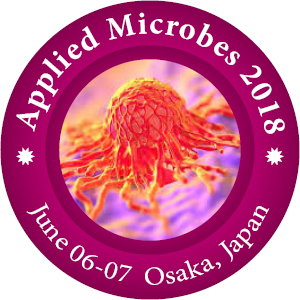Shabarinath Srikumar
University College Dublin, Ireland
Title: On the application of DNA pyrosequencing in pathogenomics and food safety
Biography
Biography: Shabarinath Srikumar
Abstract
The development of DNA pyrosequencing approaches has enabled researchers to study and understand microorganisms from deeper perspectives. DNA sequencing technologies has evolved through first, second (next) and currently stands at third generation sequencing platforms. Since bacteria can be transmitted from wider environment to animals and humans, they encounter diverse environments which include food, water, plant surfaces, extra- and intracellular phases of infection in eukaryotic hosts. An intricate transcriptional network has evolved to respond to the wide variety of environmental signals and control the ‘right time/right place’ expression of genes. We used deep sequencing of cDNA libraries (RNA-seq) to understand the transcriptional landscape of Salmonella Typhimurium during survival in 23 infection related in vitro conditions and mouse macrophages as an ex-vivo model. Our analysis yielded data on the simultaneous gene expression profiling of all genes present in the genome of S. Typhimurium. In addition, we used a technology called dRNA-seq to profile the expression of different promoters during survival of the bacterium in different conditions. Reduction in water activities inhibit many bacteria and desiccation is therefore a very traditional method of food preservation. We were also interested in understanding the intricate mechanisms behind survival of bacteria in desiccated conditions. However, neonatal pathogens like Cronobacter sakazakii are capable to survive desiccation conditions. We used RNA-seq to understand the genetic mechanism underlying desiccation survival in C. sakazakii. DNA deep sequencing not only helps us understand how transcriptional alterations aid survival of bacteria in different conditions but also enables taxonomic identification of bacteria in complex microbiomes. We sampled low/medium/high care areas within a powder infant formula industry and used 16S rDNA sequencing/Metagenomic/Metatranscriptomic approaches to understand the composition and interactions between different bacterial communities within each area. Overall, this lecture will explore the different possibilities of DNA pyrosequencing in understanding pathogenomics and food safety.

